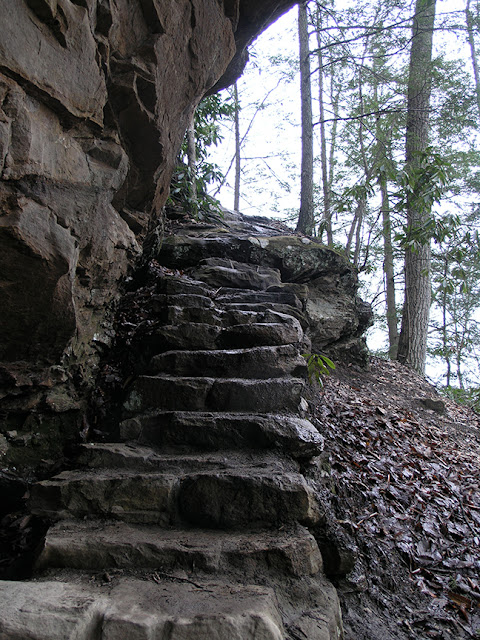 |
| Caryopteris 'Longwood Blue' with marigolds |
After a very dry June, July and August, usually our driest months, brought plenty of rain. My rain gauge recorded over eight inches in July and five in August. The plants responded gratefully. Above is one my new beds in the back, with Caryopteris 'Longwood Blue' and a dwarf Fothergilla to the right, surrounded by marigolds and a black cotton plant behind the Caryopteris.
 |
| Black cotton (Gossypium herbaceous 'Nigra') |
 |
| Close-up of black cotton flower |
I grew the black cotton from seeds collected at the USBG last fall. I should have started the seeds indoors earlier, as the plants developed much too slowly after being set out in the beds, and didn't begin to bloom until late August. I haven't seen any seed pods yet, so I may not be able to continue the line unless I am lucky to collect more cottony seeds at USBG during our upcoming BASNCR fall meeting. The flowers are quite lovely with their intricate veining. I would love doing a painting of this plant, as well as the one in the photo below.
 |
| Cuban Raintree (Brunfelsia nitida) |
One pleasant surprise was this single flower on my Cuban Raintree plant which I've been growing for the past year. I set it out on the porch this spring hoping it would bloom, to enjoy its heavenly scent, but only one flower appeared. This is supposed to be the Cuban "Galan de noche" fabled for its perfume--but it seems to be a fussy plant at these latitudes. Perhaps it may do better next summer, if I can keep it going during the winter...
 |
| East bed in the evening |
All of the native plants I put in last fall are performing well--the hardy Ageratum (Conoclinium coelestinum) above, and the Great Blue Lobelia (Lobelia siphilitica) have both grown lushly in the east bed among the Japanese maples. The Carolina Silverbell tree (Halesia carolinana) on the back left is growing into a respectable-sized shrub. Herb helped me plant a Sourwood tree (Oxydendrum arboreum) in front of it in late spring which unfortunately died back to the ground, and is regrowing from the roots; it's only 6" tall at the moment, and is a slow-growing tree, so it will be a while before it looks like much.
 |
| Great Blue Lobelia (Lobelia siphilitica) |
 |
| The back yard in July |
Despite the large, still-empty expanses, the backyard is gradually attracting more birds, butterflies and bees. We have a pair of nesting bluebirds nearby that have raised several broods in the past couple of years--the fledglings like to visit our deck and we enjoy watching their antics. The mockingbirds love the blackberry bushes in back, and some mornings I would see four or five of them perched in the bushes, gorging on the berries. One morning I was able to observe a male Ruby-throated hummingbird perched on my neighbor's tree, preening and stretching his neck to show the telling ruby spot on his throat.
 |
| Pink striped Oakworm moth |
Another morning after a rainy night I found this moth clinging to the sliding door screen. An internet search revealed it was a female Pink Striped Oakwood Moth (Anisota virginensis pellucida), an insect I'd never seen before. It stayed there for a long time and appeared nearly dead, so I waited and eventually carefully gathered it for my insect collection. Adding pollinating insects or birds to botanical paintings has become very popular lately, and I've started collecting as many as come my way for future use.
 |
| White hibiscus (Hibiscus moscheutus) |
Here are more photos of the beautiful seasonal flowers from this year's summer garden. Every year is a revelation of color and form, of nature's perfection. This living canvas of plants is a challenging way to create beauty, and very humbling, but the successes are so rewarding.
 |
| Daylily hybrid |
 |
| Daylily hybrid |
 |
| Yellow rose 'Molineux' with catmint |














